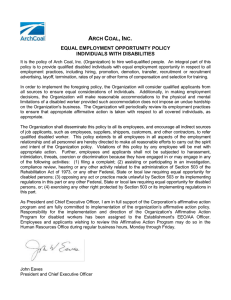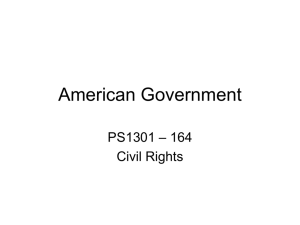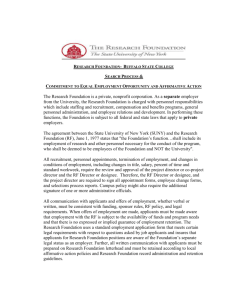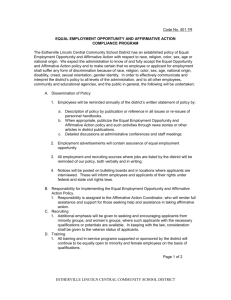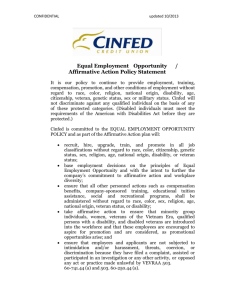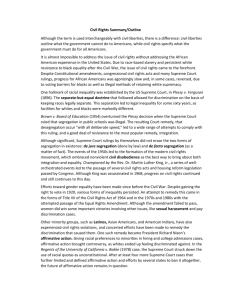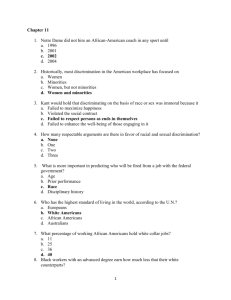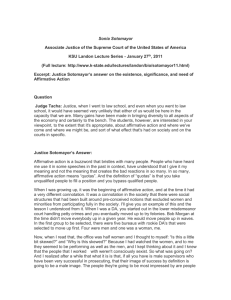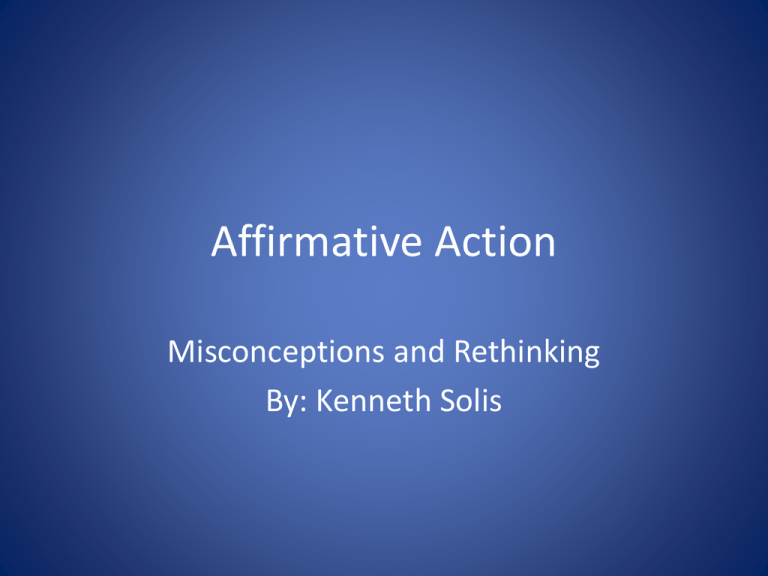
Affirmative Action
Misconceptions and Rethinking
By: Kenneth Solis
What is Affirmative Action?
• Policies designed to remedy the
underrepresentation of minority groups in the
work place. (Harris & Narayan, 2000)
• Minority groups transcend ethnicity and
encompass gender as well.
• Affirmative action is not specific to one sex or
ethnicity.
Affirmative Action Case
• Affirmative Action (A.A.) is not the only factor in hiring
decisions, nor is it specific to black applicants
• Diana Joyce, a white woman, as an A.A. beneficiary
• Johnson v. Transportation
– Transportation agency adopted A.A. to remedy the
underrepresentation of women in leadership
– Diana Joyce was given a leadership role over Paul Johnson
because she is a woman
– Court upheld this A.A. decision because sex is only one
factor among many in this hiring decision
Rethinking Affirmative Action
• “Affirmative action is an attempt to promote
equality of opportunity in a social context
marked by pervasive inequality.” (132)
• A.A. fights against discrimination such as:
– Statistical discrimination: discrimination based on
statistical information rather than an individual’s
achievements.
– Sex stereotyping: women are thought to be less
committed to jobs due to family obligations and
less often employed and promoted
Rethinking A.A. cont.
• Affirmative action is not “compensation” or
“payment” for past discrimination
• A.A. does not force overrepresented
applicants to “pay the price”
• A.A. does not give preference to applicants
less qualified
• Applicants must meet qualification criteria
regardless of underrepresented status
Conclusion
• The stigma behind Affirmative Action
programs exists because of the belief that A.A.
means preferential treatment.
• A.A. simply creates equal opportunity for
evaluation of already qualified applicants to
be considered
• Assuming only non-beneficiaries of A.A. are
truly qualified is discriminatory in itself.

